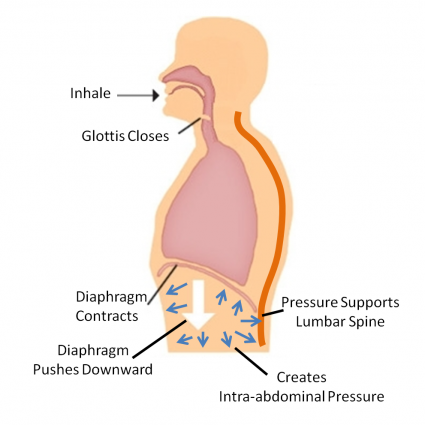Blowouts are bad…
When they happen to trucks:
When it happens to your hair:
When you lift (heavy) weights:
To quote a fitness professional,
“You have good form but you hold your breath. I prefer the BlOWOUT method. Breathe in as you lower the weight and blow it out as you press it. “- Stuck in the 80’s gym guy in track suit.
And for LOTS of people that is the conventional wisdom…..
The only problem is,
You (probably) increase your chance of getting injured.
Yes, the common gym broscience of “breathing the weight up” is, in the vast majority of cases….
Incredibly Stupid.
However there are caveats:
Are you 80 years old?
Have you experienced multiple heart attacks?
Do you have a resting blood pressure of 250/ 200?
If you answered NO to these questions then you can definitely hold your breath when lifting.
In fact, there are LOTS of times, like every rep, when you SHOULD….
It’s called the Valsalva maneuver and it’s been used safely and effectively ,
SINCE THE BEGINNING OF HUMAN KIND.
Think about it; If I toss you a jar to open what’s the first thing you do before you twist the top off?
I’m guessing take a deep breath in and hold it……
But you should stop doing that because:
A) 80’s gym guy told you it’s dangerous.
B) A guy in a lab coat who weighs 165lbs and benches 95lbs wrote an article about how it could cause your blood pressure to skyrocket making you either:
- Pass out
- Blow a hole in your Aorta killing you instantaneously
I made the, “hole in your Aorta” part up…
But I have been told from a very weak fitness professional person that you can die from using the Valsalva….
Yes, DIE.
Not become light-headed or pass out…..but your LIFE WILL END.
Reality is, some of these things could happen, like light-headedness, headache, passing out and yes in some cases heart attack….
But being affected by any of those is very low for most people and that last one,
the one that will actually do irreparable harm to you, is about as likely as winning the lottery, getting hit by lightning and attacked by rabid spider-monkeys all on the same day at precisely the same time.
or as likely as the Mayans being right about that whole, “End of the World” thing….
Which makes having a heart attack from the Valsalva about 100x’s less likely to occur as it would:
- Having Sex
- Taking a Crap
- Mowing your lawn
All “common” ways to experience a heart attack.
The Valsalva is a good thing because:
When you take a deep breath and hold it you create a giant ball of air which presses out against the ribcage and spine .
This helps increase intra-abdominal pressure vastly increasing the stability of the torso.
When lifting heavy things, or anything for that matter, it’s important to create “tightness” throughout the body so joints that are not creating movement don’t move.
Remember:
“Injuries happens when things move that shouldn’t move”
Not from the weight being heavy……
The key to the Valsalva is breathing DEEP…as in, through the diaphragm, pushing it out in ALL directions.
NOT into the chest.
Simply put Diaphragmatic breathing is “belly breathing“.
So why shouldn’t you breath out while lifting?
Cause stuff changes…AKA, Things move that shouldn’t….
The minute we breath out that air pocket shrinks which means intra-abdominal pressure decreases and with it torso stability.
What happens: Stuff moves
- Ribcage collapses.
- Chest angle changes.
- Scapula rotate up (usually).
- Low back (spinal segments) have more room to move and are more likely to buckle under pressure.
The lowdown:
- Take a deep (diaphragmatic) breath at the beginning of any movement, locked out at the top.
- Hold it through the bottom of the lift. NO MATTER WHAT
- On light weights you can begin to breathe out 3/4ths to 4/5ths of the way up, especially on multiple rep sets.
- On heavy weights HOLD IT until you get to the top, then take another breath.
Whatever you do, DO NOT BREATH OUT when handling heavy weights until you have locked the weight out at the top of the lift.
Think about it this way:
If you were on the bench press and had 300lbs over your chest would you;
A: Try to stay as tight, stable and as locked into the bench as possible?
or
B: Let things move all over the place under that 300lbs?
Obviously, like anything in life, there are risks involved with this.
You could end up like this:
If you have blood pressure or heart issues you should probably NOT use this technique.
More so, you probably shouldn’t be lifting max or near max weights if that’s the case in the first place.
However, if you’re lifting max or near max weights you should have a good understanding that there are tradeoffs in this game and the stability and injury reduction from the Valsalva maneuver far out weigh the outside chance of a cardiac event.






